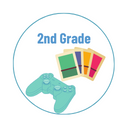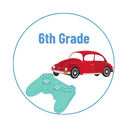Difference Between a Resume and Curriculum Vitae
In the competitive world of job applications, understanding the distinction between a resume and a curriculum vitae (CV) is crucial. While these documents serve the same purpose of showcasing an individual's qualifications and experiences, they differ significantly in format, content, and usage.
Definition of Resume and Curriculum Vitae (CV)
A resume is a concise summary of a person's work history, skills, education, and achievements, usually tailored for specific job applications. On the other hand, a curriculum vitae (CV) is a comprehensive document that provides an in-depth overview of an individual's entire career, including academic credentials, research experience, publications, presentations, and more.
Purpose
Resumes are commonly used in industries where concise and targeted information is preferred, such as business, technology, and creative fields. They are designed to highlight relevant skills and experiences quickly, making them ideal for job seekers looking to make a strong first impression in a competitive job market. Continue below >>>
Multiplication Games | Addition Games| Subtraction Games | Telling Time Games | Fraction Games |
Kindergarten Math Games

Play free preschool and kindergarten math games for kids. Fun math activities for kindergarten
Go to page1st Grade Math Games

Math games for 1st grade students to play games and practice different math topics. Maths games for class 1
Go to page2nd Grade Math Games

2nd grade math games for kids to play and practice math problems. Maths games for 2nd class
Go to page3rd Grade Math Games

3rd grade math games for kids to play and practice math problems. Maths games for class 3
Go to page4th Grade Math Games

4th grade math games for kids to play and practice math problems. Fun math activities for 4th graders
Go to page5th Grade Math Games

5th grade math games for kids to play and practice math problems. Cool math games for 5th graders
Go to page6th Grade Math Games

6th grade math games for kids to play and practice math problems. Math jeopardy 6th grade.
Go to page7th Grade Math Games

7th grade math games for kids to play and practice math problems. Math games for grade 7
Go to page
In contrast, CVs are typically utilized in academic, scientific, and research-oriented professions where a detailed account of an individual's professional and academic background is necessary. CVs allow individuals to showcase their accomplishments, contributions to research, publications, presentations, and academic achievements in greater detail.
Length and Format
Resumes are usually limited to one or two pages, emphasizing brevity and relevance. They follow a standardized format, including sections such as contact information, summary or objective statement, work experience, education, skills, and additional sections like certifications or volunteer work.
CVs, on the other hand, can extend to multiple pages, accommodating the comprehensive details of an individual's career. They have a more flexible format and can include sections such as academic background, research experience, publications, presentations, grants, awards, affiliations, and professional memberships.
Content
The content of a resume focuses on highlighting specific achievements, skills, and experiences that are directly relevant to the job applied for. It emphasizes quantifiable accomplishments and uses action verbs to convey proficiency and effectiveness in previous roles.
Conversely, a CV provides a comprehensive overview of an individual's entire career trajectory, including academic achievements, research projects, publications, and presentations. It is often updated regularly to include the latest accomplishments and contributions.
Flexibility
Resumes offer flexibility in terms of customization for different job applications. Job seekers can tailor their resumes to highlight the most relevant skills and experiences for each position they apply for, ensuring maximum impact.
CVs, while comprehensive, also allow for customization by emphasizing different sections or experiences based on the requirements of the position or industry.
Target Audience
Resumes are typically tailored for hiring managers, recruiters, or potential employers who need a quick overview of a candidate's qualifications and suitability for a specific role.
CVs are commonly used by academic institutions, research organizations, and grant committees to evaluate an individual's academic and professional accomplishments in detail.
Usage
Resumes are widely used in the private sector for job applications, networking events, career fairs, and online job portals.
CVs are prevalent in academia, research institutions, government agencies, and international job markets where a detailed account of an individual's professional background is required.
Sections
Common sections in a resume include:
- Contact Information
- Summary/Objective Statement
- Work Experience
- Education
- Skills
- Additional Sections (Certifications, Volunteer Work, etc.)
Common sections in a CV include:
- Contact Information
- Academic Background
- Research Experience
- Publications
- Presentations
- Grants and Awards
- Professional Affiliations
- References
Design
Resumes often feature a clean and professional design, with a focus on readability and visual appeal. They may include elements such as bullet points, bold headings, and strategic use of white space to highlight key information.
CVs may have a more academic or scholarly design, with a focus on organizing vast amounts of information in a clear and structured manner. They may include subsections, footnotes, and a chronological or reverse-chronological format depending on the individual's career trajectory.
Customization
Resumes can be customized to align with specific job descriptions, emphasizing relevant skills and experiences tailored to the requirements of the position.
CVs can also be customized by rearranging sections or highlighting different aspects of an individual's career based on the intended audience or purpose.
Length of Content
Resumes prioritize brevity and conciseness, typically ranging from one to two pages to maintain the reader's interest and attention.
CVs allow for more extensive content, often extending to multiple pages to accommodate the detailed account of an individual's academic and professional achievements.
Tailoring for Job Applications
Tailoring resumes involves aligning the content with the job requirements, using keywords from the job description, and showcasing relevant experiences and skills that match the employer's needs.
Tailoring CVs may involve highlighting specific research projects, publications, or academic achievements that demonstrate expertise in a particular field or area of study.
Global Variations
While resumes are standard across industries and regions, slight variations may exist in terms of preferred formats, layouts, and content based on cultural or regional preferences.
CVs may vary more significantly based on academic traditions, industry standards, and cultural expectations in different countries or regions.
Conclusion
In conclusion, understanding the key differences between a resume and a curriculum vitae (CV) is essential for job seekers navigating the recruitment process. While both documents serve the purpose of showcasing qualifications and experiences, they vary significantly in terms of format, content, and usage. By tailoring these documents to specific job applications and industries, individuals can effectively highlight their strengths and stand out in a competitive job market.
FAQs
-
Is it necessary to include references in a resume or CV?
- While it's not mandatory, including references in a CV is more common than in a resume, especially in academic or research-oriented fields. However, it's essential to seek permission from references before listing them on either document.
-
Can I use the same resume for different job applications?
- It's recommended to tailor your resume for each job application by highlighting relevant skills and experiences that align with the specific requirements of the position. This customization increases your chances of standing out to potential employers.
-
Should I include a photo in my resume or CV?
- In most cases, it's best to avoid including a photo in your resume or CV, unless explicitly requested by the employer or if it's customary in your industry or country. Focus on presenting your qualifications and experiences in a professional manner without visual distractions.
-
How often should I update my CV?
- It's advisable to update your CV regularly, especially after completing significant milestones such as completing a degree, publishing research papers, or receiving awards or certifications. Keeping your CV up-to-date ensures that you're prepared for new opportunities as they arise.
-
Can I submit both a resume and a CV for a job application?
- It's generally not necessary to submit both a resume and a CV for a job application unless specifically requested by the employer. Choose the document that best aligns with the job requirements and industry standards, and tailor it accordingly to showcase your qualifications effectively.










